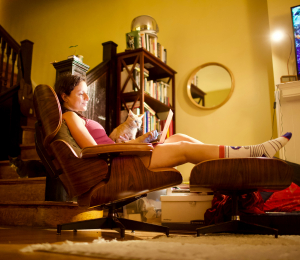The world has been in stasis for over a year. Work from home; self-isolate; social distancing have been our constraints. And technology has been thrust into everyone’s consciousness. Companies have been furiously developing online platforms to enable people to connect remotely – from massive growth in online shopping, through remote logon to work systems, to video conferencing. Not many of us had heard of Zoom in 2019 and yet, apparently, Zoom’s Daily Active Users grew from approximately 30,000 in January 2020 to over 1.7 million at the end of 2020!
This has been a great response to the restrictions. It has enabled us to get stuff done. We have been able to log on to systems to complete work tasks, to order stuff, and even to write blogs. All this is transactional. Video team meetings have also been mostly transactional – passing status updates, collaborating on a task, even interviews and performance reviews – with hardly time to ask about someone’s weekend or say Happy Birthday.
So the world didn’t stop – stuff got done.
Has anything got lost in the busyness?
We may have become more connected but at the same time we have become more isolated. Social interactions have been suppressed. We miss the quick coffee with our desk neighbour or a walk to grab lunch with a friend. The spontaneous interaction at the coffee machine or on the stairs is missed. We are social animals and we value relationships.
Has technology helped? Yes, of course, video systems like Zoom and Facetime have been used by millions for Friday evening drinks, quizzes, family chats and reading bedtime stories.
Blessings and Curses!
So, the responses to the pandemic have had their problems as well as benefits. Some people have found themselves with extra time for things they always wanted to do – spending time with the family, taking up running or painting, or learning a language.
Does technology get in here too? For example, those learning a language may have downloaded an app like Duolingo or Google Translate. Once again these are transactional tools – 2 dimensional. Why do we learn a language? To communicate – to exchange meaning in words, sounds and gestures.
Language:
“The principal method of human communication, consisting of words used in a structured and conventional way and conveyed by speech, writing, or gesture.”
Live life in colour!
This is where conversation-based language learning has the edge. By seeing people, hearing their voice and seeing their body language we can learn to wholly communicate in a new language. It is a two-way exchange in 3-D. Live videoconferencing tools bring people together for dynamic language lessons. The pandemic has therefore made it practical for you to learn with others from your sofa!
Memorising words, phrases and even tables of verbs can leave you with just a pile of Lego bricks. Learning with people gives you flexible communication links to build relationships. For us, the importance of community and social connection have been central to our language school for 30 years. It’s more important than ever now.
Of course Netflix wouldn’t charge more for colour. Although black and white films do have a niche artistic following, you want the full colour films. So do use the language apps for their purpose – learning words and phrases – and then learn to communicate with humans.



